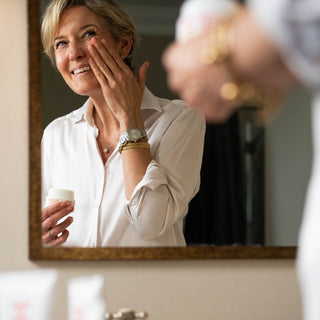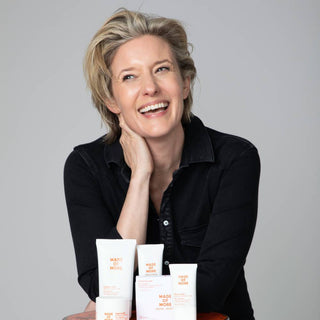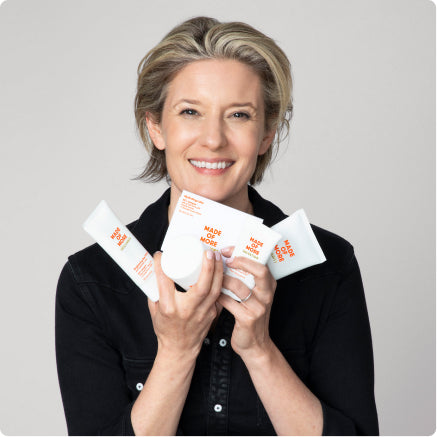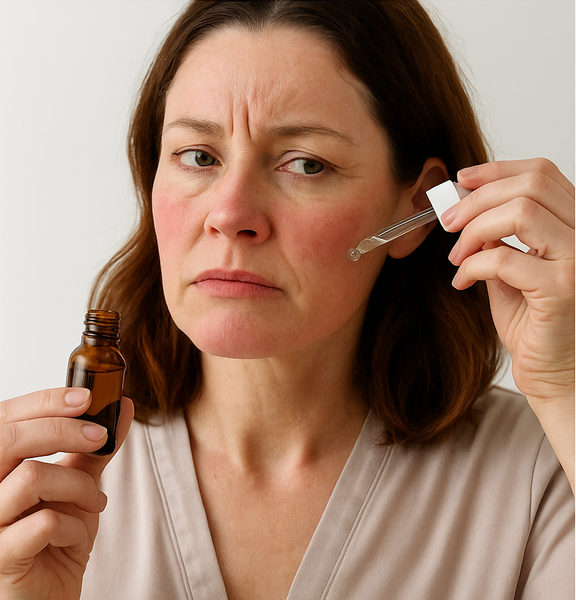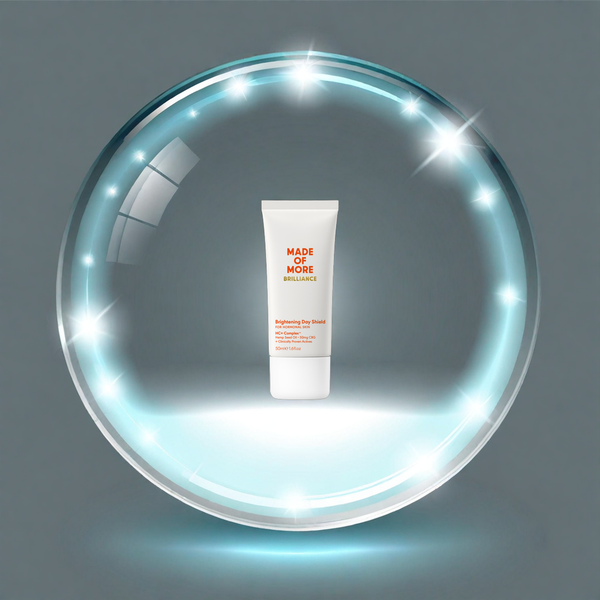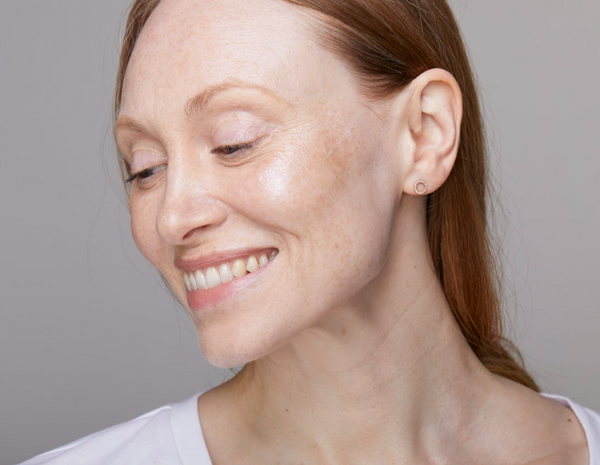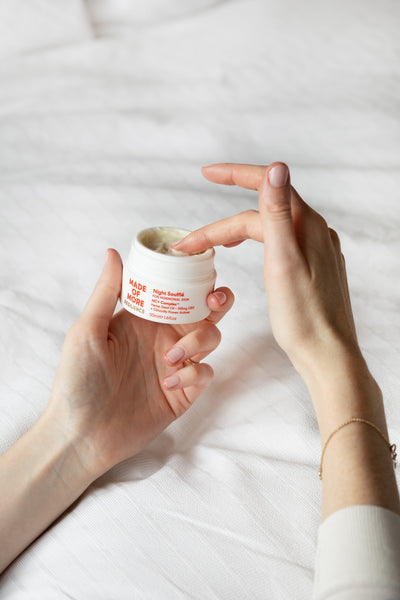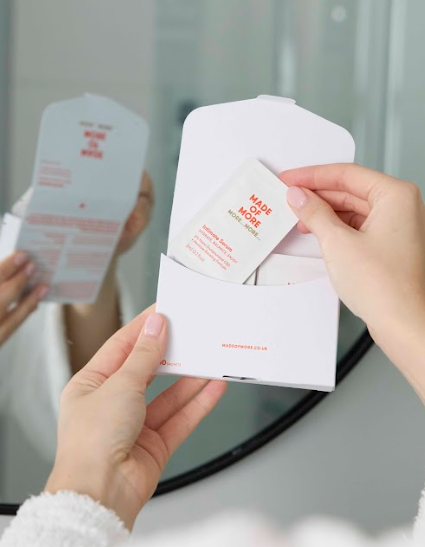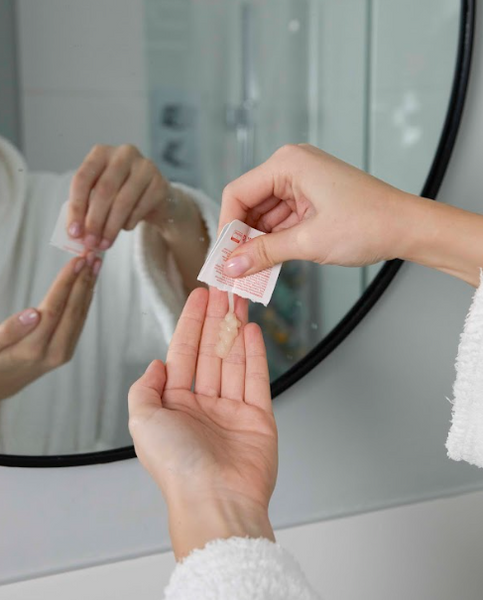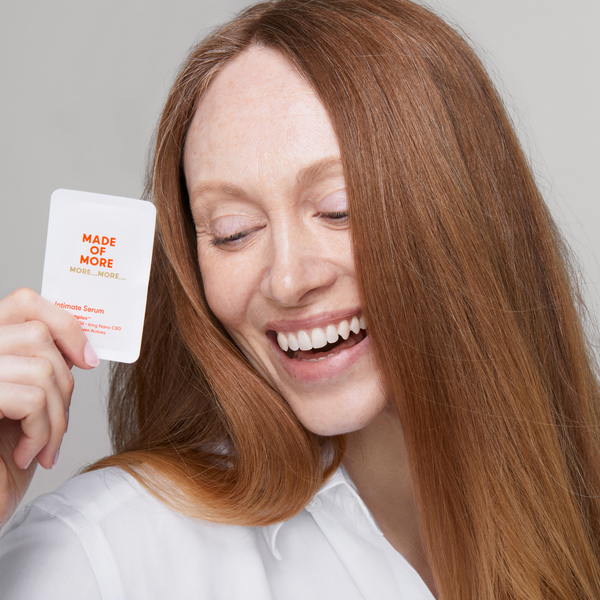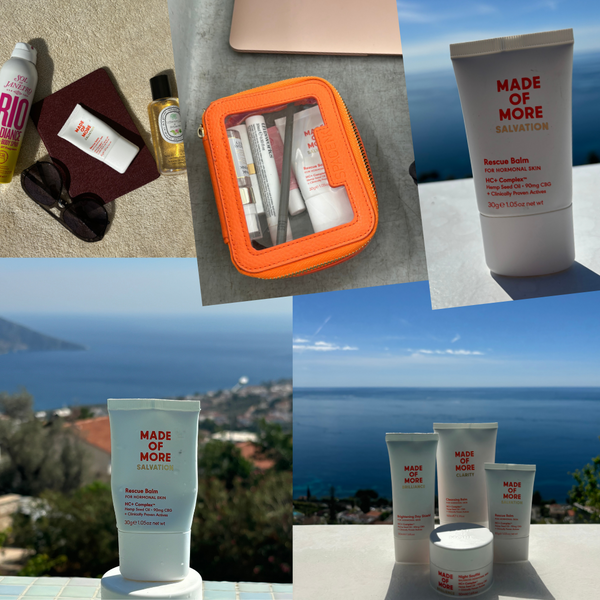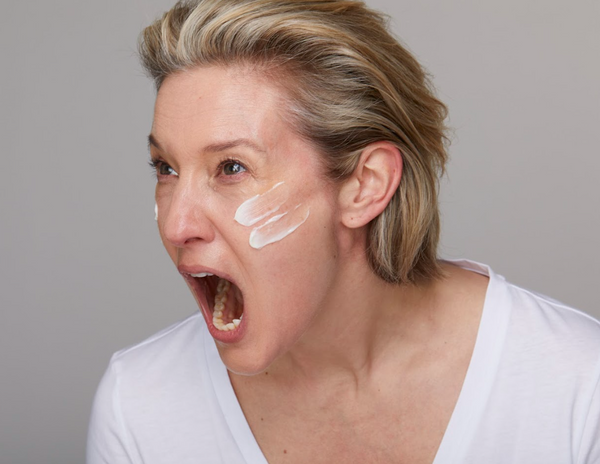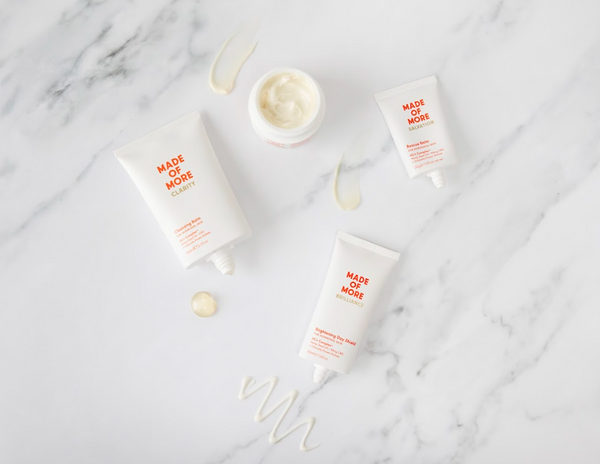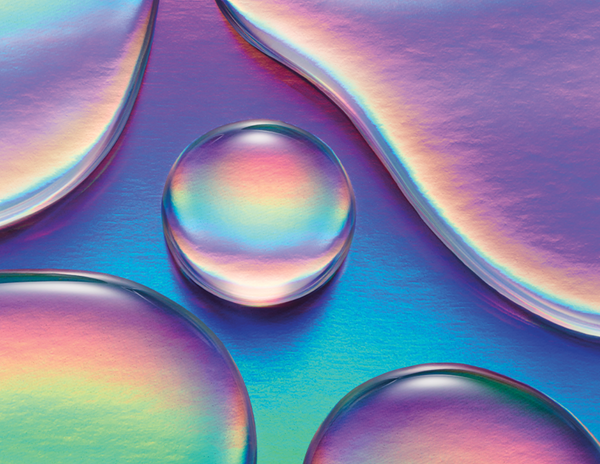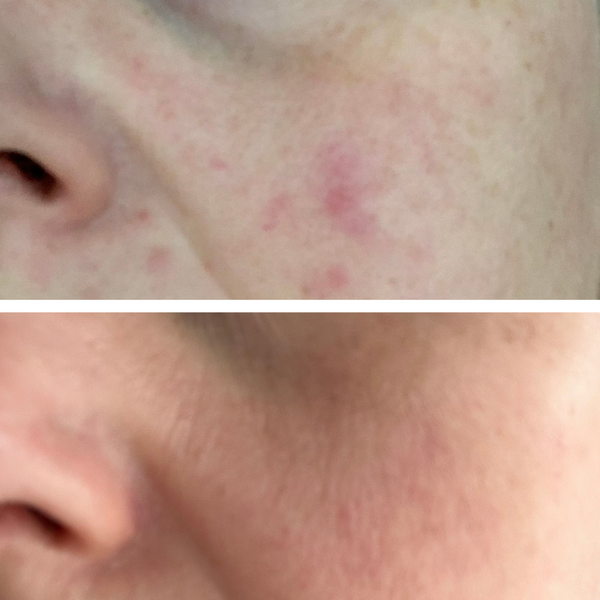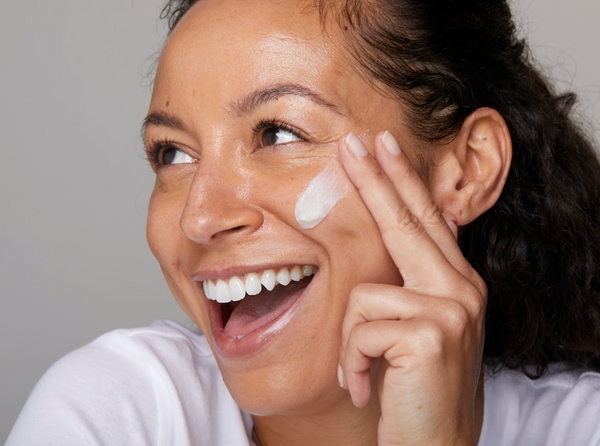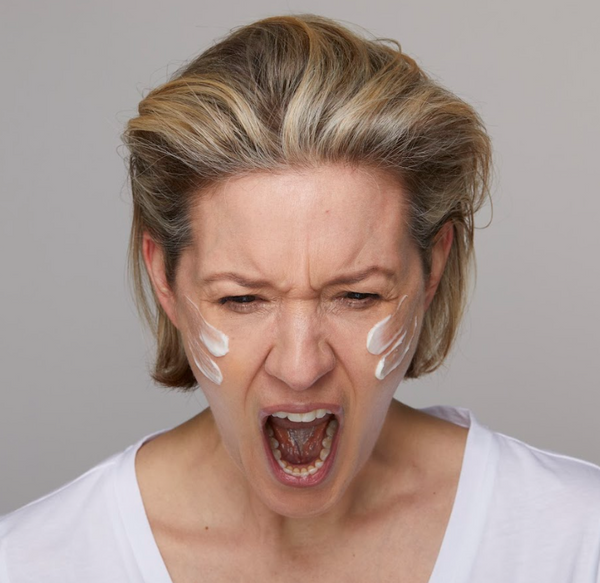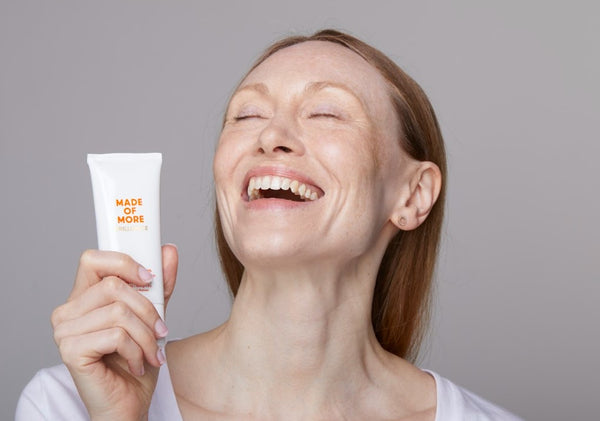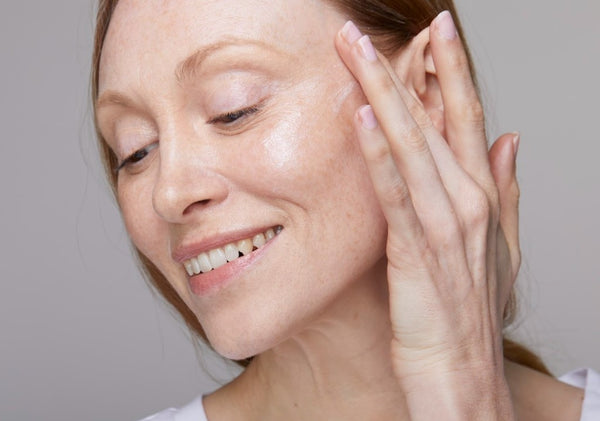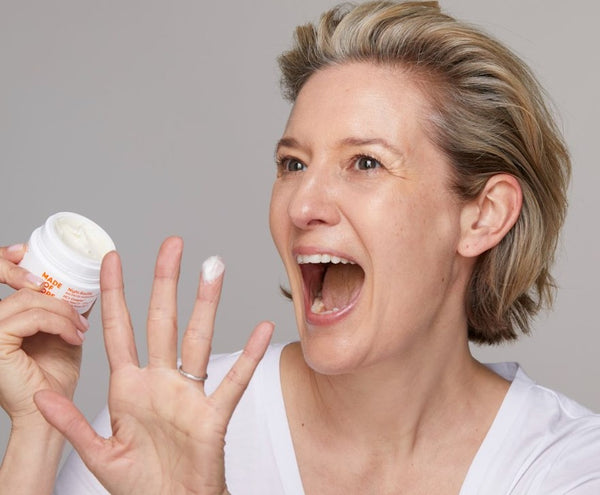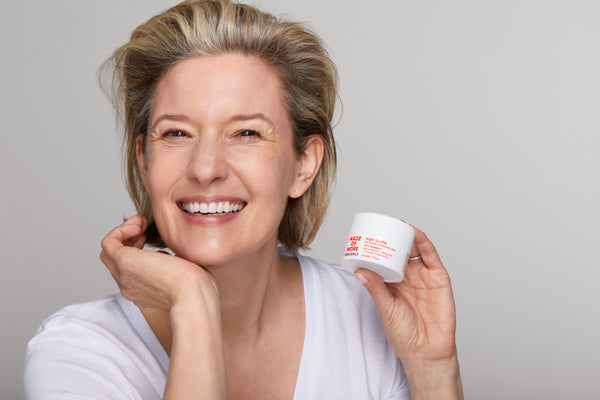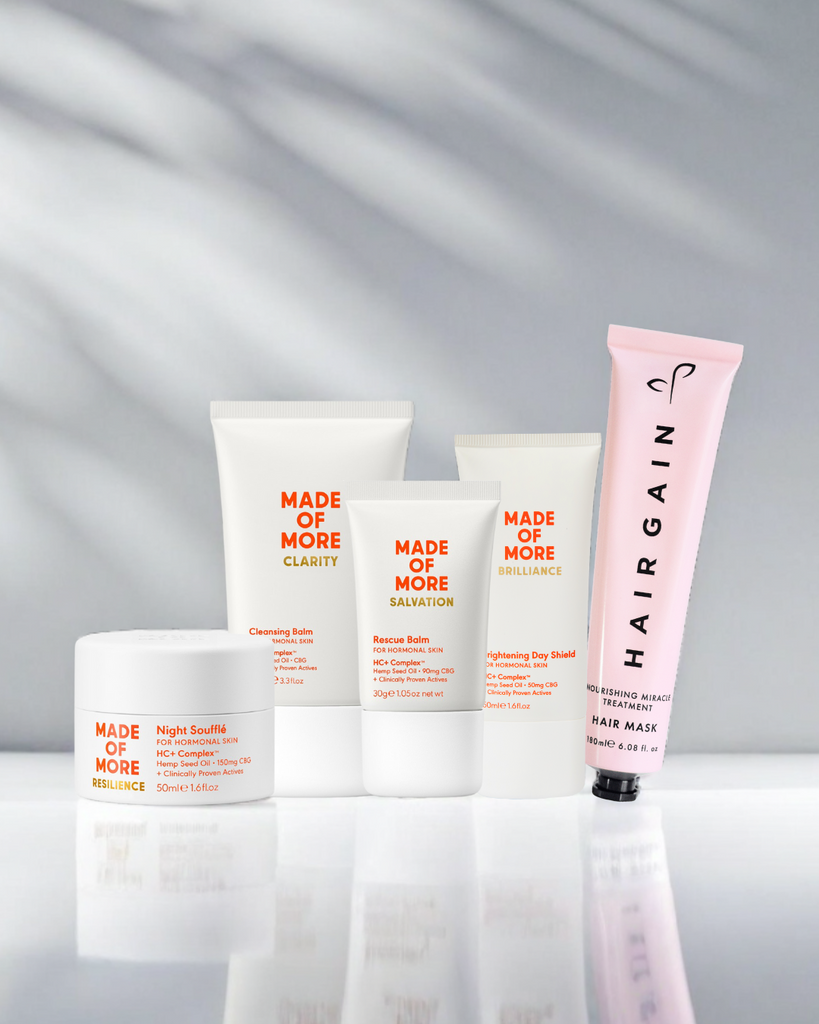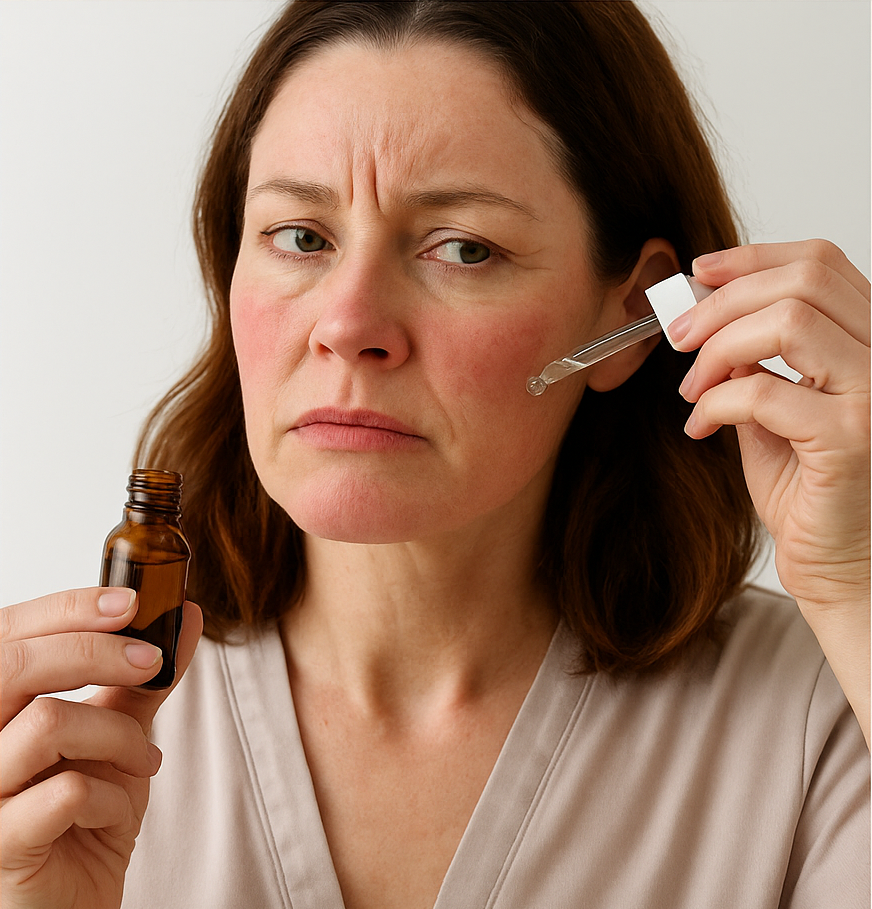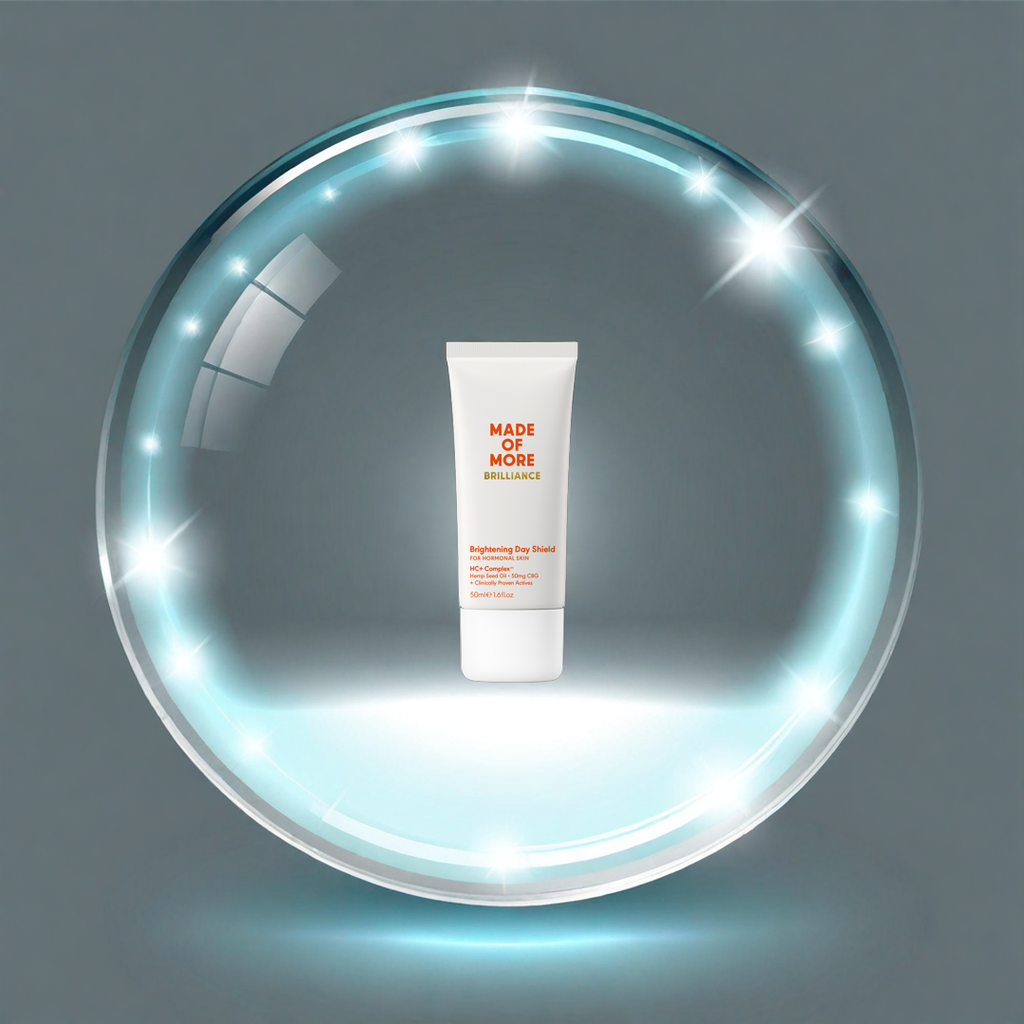-
Dryness and dehydration: During winter, the skin tends to be drier due to colder temperatures and lower humidity levels. As spring arrives and temperatures rise, the skin might initially struggle to adjust, leading to dryness or dehydration. Hormonal fluctuations, particularly during perimenopause and menopause, can also cause the skin to lose moisture more quickly.
-
Increased sensitivity: Hormonal changes can lead to thinner skin, making it more sensitive to environmental changes. In spring, as allergens like pollen increase, people with hormonal skin might experience more redness, irritation, or allergic reactions.
-
Hormonal breakouts: Hormonal fluctuations during midlife, especially around perimenopause and menopause, can result in higher levels of oil production. With the change in season, this could lead to an increase in breakouts or hormonal acne, particularly along the jawline, chin, or forehead.
-
Changes in skin tone and texture: As sunlight exposure increases in spring, skin can experience pigmentation changes, like age spots or melasma. Midlife hormonal skin is particularly prone to these changes, and UV exposure can trigger dark spots. It's important to wear sunscreen daily to protect the skin and even out the skin tone.
-
Collagen loss: As estrogen levels decline during midlife, skin loses some of its elasticity and firmness, which can be more noticeable as the seasons change. In the spring, when people are more likely to engage in outdoor activities, the skin might show signs of this loss of firmness, such as sagging or fine lines becoming more prominent.
-
Increased oiliness: As temperatures rise in spring, the skin may produce more oil in response to increased humidity and heat. For those with hormonal imbalances, especially around menopause, this can exacerbate oiliness, potentially leading to clogged pores or breakouts.
Top tips for maintaining radiant and bouncy spring skin:
-
Hydration – Use a hydrating moisturiser ensuring it is packed with nurturing and skin boosting ingredients such as peptides and fatty acids.
-
Gentle Exfoliation - To help remove the build-up of dry skin from winter, gentle exfoliation can help promote smoother skin. Just be careful not to over-exfoliate, especially if your skin is already more sensitive due to hormonal changes. Look for ingredients such as lactic acid that will gently do the work for you.
-
SPF - As spring brings more sun exposure, make sure to apply a broad-spectrum SPF (SPF 30 or higher) every day to protect your skin from UV damage.
-
Stay Hydrated - Drinking enough water and using products with hydrating ingredients will help balance out the skin’s moisture levels and help it adjust to seasonal changes.


